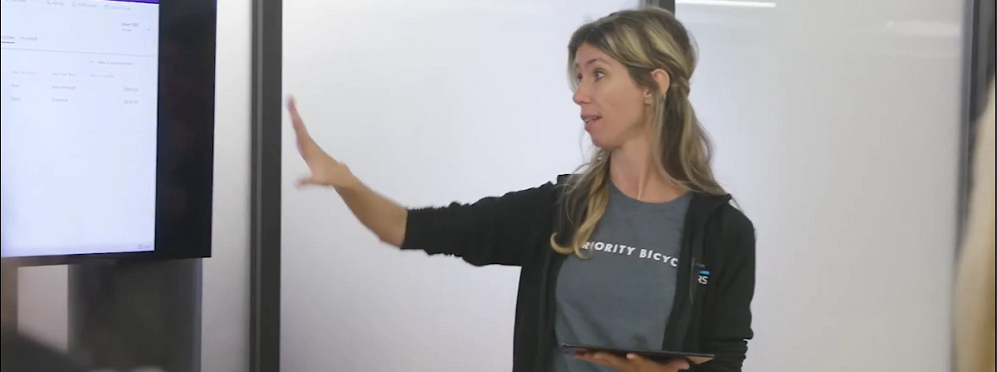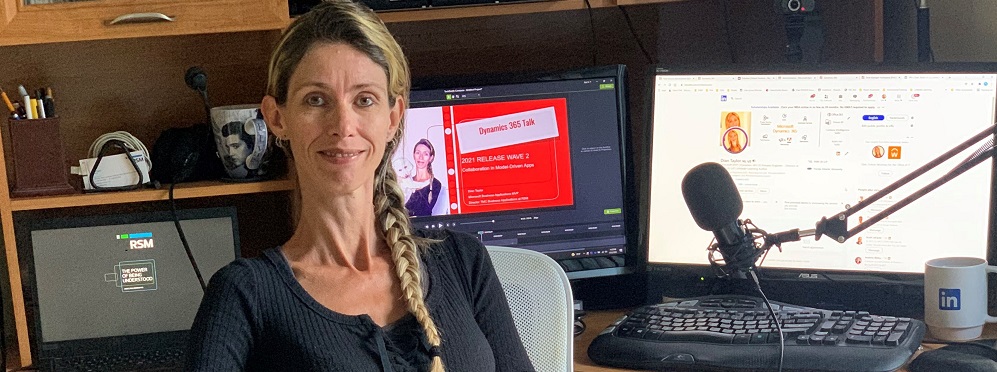Anatomy of the D365 Outlook App Panel

Ever since Microsoft came out with the Outlook app for Dynamics 365 I’ve had several folks ask me how to configure the panel that opens up when you click on the Dynamics 365 button in Outlook.
If you haven’t noticed yet, this form is not one standard form that lives in Dynamics 365. There are actually three forms that make up the panel that you see when clicking the button from within an item in outlook. Lets dive in and talk about how we can configure these forms. I’m going to start start by taking a look at is the panel itself and the three different components its made up of. In the example below I am showing the panel displaying information of a contact record. There are also forms for Accounts and Leads in Dynamics 365.
(1) Tracked Regarding
The top part will only be visible if you open the Dynamics Outlook App while you’re on an outlook item that has been tracked to Dynamics 365. You can create a quick view form for the entity that the outlook item has been tracked against, and then enable that form on the Dynamics 365 App for Outlook, which is a model driven app in your Dynamics 365 instance. I will go into details on how exactly to do this later. Keep in mind that only the first three fields of the quick view form will be show. You can add more fields to the form, but they will not show on the panel.
(2) Entity Details
The contact information seen on the screenshot below loads if the email address on the selected outlook item matches a contact record in your Dynamics 365 instance. Keep in mind that only the first three fields from the quick view form will be shown on the panel. If you add more fields to the forms, but they will not show. If you add a subgrid to this form, this will also not show on the panel.
If there is a lead with this email address instead, the ‘App for Outlook Lead Card’ quick view form will load. If there is an account record with this email address instead, the ‘App for Outlook Account Card’ quick view form will load.
NOTE: If the record exists in Dynamics 365 but the user doesn’t have the security privileges to view this record in Dynamics 365, the entity card won’t load, as the system doesn’t ‘see’ the record. A blank form will load allowing the user to create a new contact, lead or account record.

(3) Entity Related Grids & Fields
The related information in section 3 is coming from the contact quick view form called ‘App for Outlook Contact Quick View’. This form allows us to show related records by adding subgrids to the form. Keep in mind that the subgrids only show related records for the entity record. For example, the screenshot above shows a contact record in Dynamics 365. The subgrids show items (opportunities and cases) which are related to the contact record, not the account the contact belongs to.
NOTE: In order to show contact related records, you would need to have a contact lookup field on the related entities. For both the case and opportunity entities I’m using the out of the box primaryconactid fields.
If this record was a lead record the quick view form for leads called ‘App for Outlook Lead Quick View’ would load instead. If this record was an account record the quick view form for accounts called ‘App for Outlook Account Quick View’ would load instead.
Now that we know the anatomy of the Outlook panel, we can configure the forms just like we do any other Dynamics 365 entity form, which I’m sure most people are familiar with, so I’m not going to write about that.
Add forms to Dynamics 365 for Outlook app
Once the quick view forms have been created we need to add them to the app. The account, contact and lead forms should already be added to the app, but maybe you created a new opportunity quick view form that you want to load when an outlook item is tracked regarding an opportunity record. Navigate to https://make.powerapps.com/ and make sure the correct environment (top right) is selected. Click on the ellipse next to the Dynamics 365 App for Outlook and select ‘Edit’. This will open the App Designer window.

In the app designer we will select which quick create forms we want the Outlook app to use. In my example I’m going to enable the quick view form for Opportunities that I want the Outlook App to use when an outlook item is tracked regarding an opportunity record.
Scroll down to the opportunity entity in the ‘Entity View’ section in the app designer, click on ‘forms’ next to opportunities. On the right side under ‘Components’ you’ll see all the forms that are enabled for the opportunity entity in this app. Select the one quick view form you want this app to use, then click ‘Save’ on the ribbon and click ‘Publish’. There you go, all done!
NOTE: These steps explained above are the same for other entities, but the entity need to have activities enabled and it needs to be added to the Outlook App. (Click ‘Entity View’ in the app, then ‘Entities’ under Artifacts on the right hand side.)

I hope you enjoyed this post! Be sure to check in again next week for a new topic or subscribe here to never miss another post!












Comments are Closed